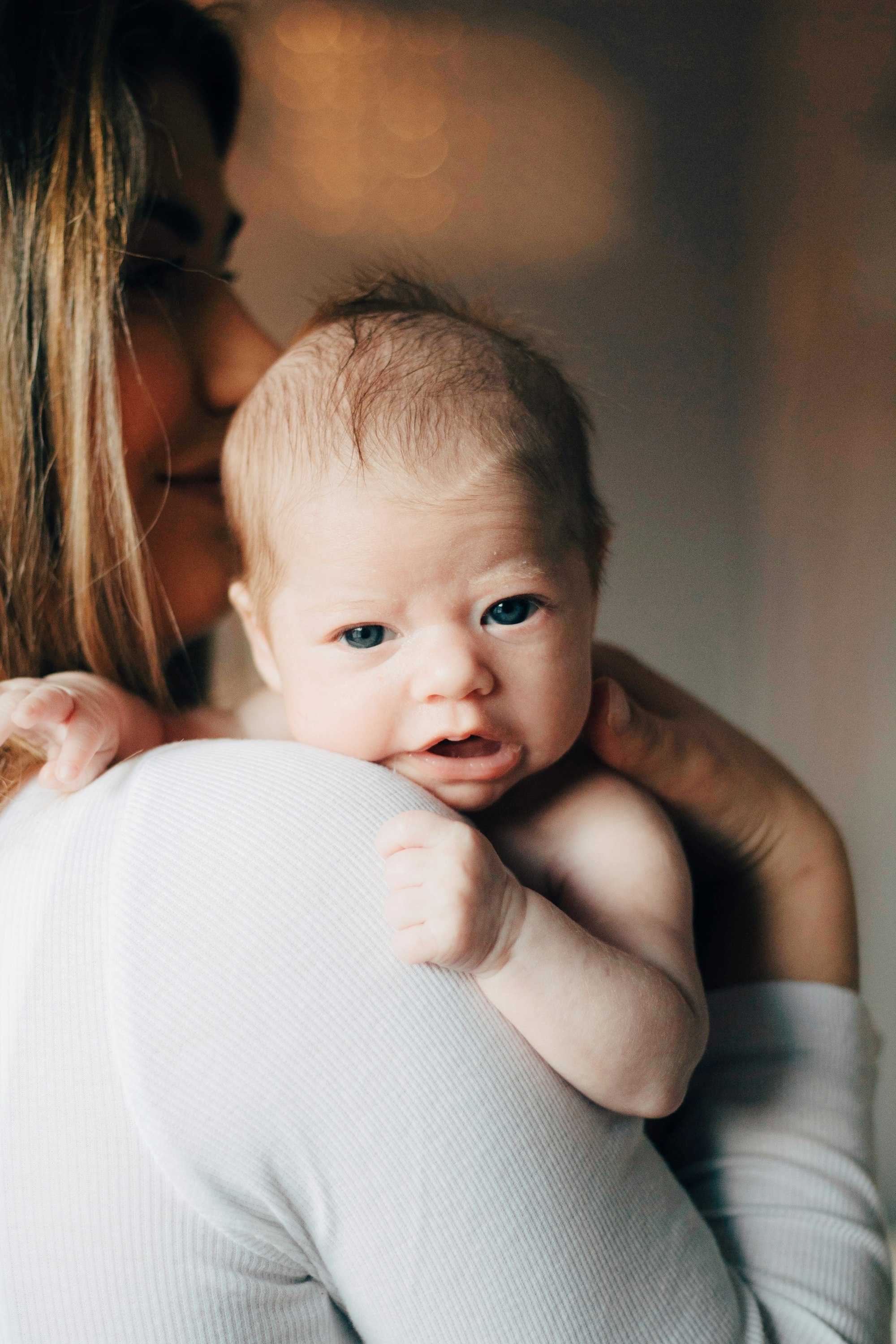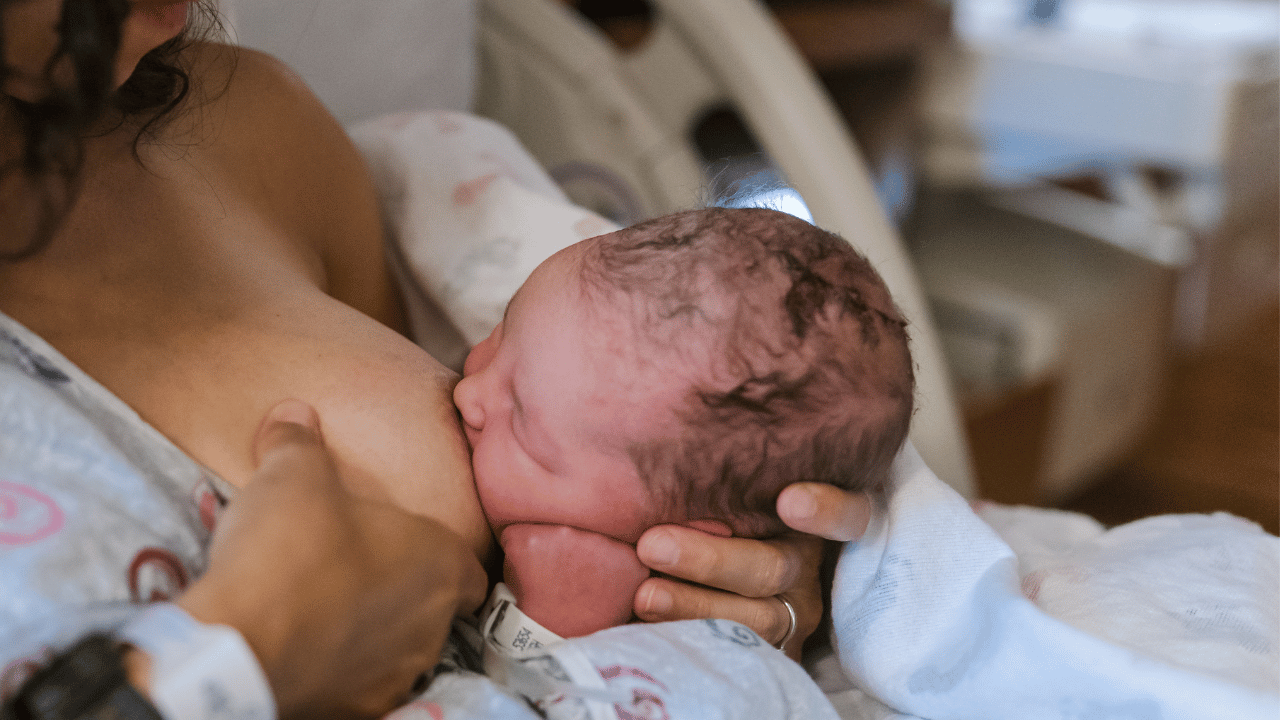The Symptoms of Mastitis and How to Treat It Naturally
Continuing to breastfeed is crucial for mothers with mastitis; ceasing to do so could exacerbate the infection.

The Symptoms of Mastitis
What is mastitis?
A Mastitis problem is usually caused by a blocked milk duct or bacterial infection. Mastitis in women can be unilateral (in one breast) or bilateral (in both breasts).
Lactational mastitis is usually seen on the upper part of the breast; this is where most of the breast tissue is. Periductal mastitis is when the ducts under the nipple are infected and inflamed.
The symptoms of mastitis (with mastitis help and treatment) usually only last about five days. You can Google “mastitis pictures" to see what mastitis looks like.

Lactation Mastitis Causes
• There may be engorgement that causes a bad latch problem.
• Sucking problems or tongue issues in a baby that results in a bad latch.
• Nipple pain that causes the mother to breastfeed less frequently.
• A change in feeding pattern that would result in a baby feeding less, such as:
- If a baby starts sleeping longer stretches,
- If a baby begins teething,
- If a baby is given supplements.
- An overly busy day or
- Implementing a feeding schedule.
These can all cause problems.
• Cracked nipples can allow an infection to enter the breast.
• Pressure on the breast can hinder the flow of milk and be the cause of mastitis. This is why you must wear bras and clothing that are not too tight. Other causes may include: sleeping on your stomach and using breast pumps with flanges that are too small.
• Stress, poor diet, and lack of sleep can cause your immune system to crash, making infection much more likely to occur.
• A history of recurrent mastitis can mean that a mother is more susceptible to infection and, therefore, at higher risk.
• A mother with diabetes is also at higher risk of infection.

Signs and Symptoms of Mastitis Infection
- There may be a lump in the breast.
- The pain is in the mastitis area of infection or blockage.
- There may be pus and blood in the breast milk.
- Mastitis symptoms usually include a red, hot, and swollen breast.
- There may be red streaks on the skin; from the problem area toward the armpit.
- Signs of mastitis may include flu-like symptoms such as an aching body.
- Fever is higher than 38.4 ˚C.
Treatment for Mastitis
- The mother must continue to breastfeed. If she stops, the infection may get worse. Abrupt weaning increases the risk of acute mastitis in the form of a breast abscess. The mother should breastfeed more often now, at least every 2 hours, and during the night. The milk is safe for a baby to drink, even if it contains pus or blood. Breastfeeding will also help to free any blocked milk in the milk ducts.
- When a mother has mastitis, she should drink plenty of fluids to stay hydrated.
- Mothers can try different breastfeeding positions to help the milk flow and eliminate the blockage. A mother can try positioning her baby so that her baby's chin is placed in the same direction as the lump.
- A warm compress used just before feeding the baby can help the milk flow better when treating mastitis.
- A good mastitis therapy is breast massage, which can help increase lymphatic drainage. Breast compressions during breastfeeding can also help get the milk flowing and unblock milk. The mother should breastfeed her baby immediately after massaging the breast.
- The mother should wear loose-fitting clothing and a bra that fits properly without putting unnecessary pressure on the breasts.
- Treatment of mastitis can include cold compresses, which are used after a breastfeeding session to help with pain relief.
- As part of mastitis treatment, a mother should get plenty of rest, good food, and fluids. She should try to sleep when her baby falls asleep; this will help her rest and recover and will give her baby more time at the breast. If possible, a mother should take off from work for at least a few months or even a year.
- You can prevent recurrent plugged ducts by taking Lecithin supplements.

How to Naturally and Quickly Treat Mastitis
Oral Medication for the Treatment of Mastitis
- Echinacea supplements can help boost the immune system.
- Extra vitamin C will also help the body fight the infection.
- Vitamin E supplements are usually used in the treatment of mastitis.
- Ibuprofen and acetaminophen can be taken for pain relief / anti-inflammation; they are safe to take while breastfeeding.
- Mom can be given antibiotics for mastitis that are safe while breastfeeding. This is given only if the infection is a bacterial infection. The mother should finish the course of antibiotics. If the infection does not disappear after a course of antibiotics, the mother should see a physician to rule out the possibility of inflammatory breast cancer. Chronic mastitis that keeps appearing in the same spot can also indicate a breast tumor.
Mastitis Prevention
- Feed your baby on demand. Do not try to keep your baby on a feeding schedule.
- Avoid unnecessary pressure on your breasts.
- Eat a healthy diet with plenty of fluids and get as much rest as possible.

The Tushbaby Hip Carrier
With its ergonomic design and comfortable waistband, Tushbaby provides optimal support for you and your baby. Say goodbye to shoulder and back pain from traditional carriers, as Tushbaby evenly distributes your baby's weight, relieving strain and promoting better posture.
Comments
My Breast Is Turning Red
by Nickie
"I'm a first-time mother of a little girl who is just 12 days old. I have some knots in my left breast. I've been doing warm water massage for four days, also pumping out the milk, and breastfeeding my baby from the affected side.
She drinks a minimum of 15 min and a max of half an hour every time throughout the day, but even after all this, I'm finding no way to get rid of the knots. I find sometimes the affected area is turning red!"
Re: A blocked milk duct
by: Tracy
"Hi, have you tried breast compression while breastfeeding? It is essentially just massaging the breast while you breastfeed; this should help to drain the breast more efficiently.
Have you checked your nipples to see if you have a blockage? If you see a little white spot or blister, it may be a nipple bleb. Here is a page on that...Milk blisters
Remember to vary your breastfeeding position with each feed.
Taking garlic and Vitamin C supplements can help boost the immune system and fight infection.
A blocked duct needs to be sorted immediately; you do not want to risk it becoming a mastitis infection. Please see a lactation consultant."
Engorged with a Few Plugged Ducts
by Sonia (South Jersey)
"My 4th baby just turned seven weeks. He slept more than usual yesterday morning and skipped a feeding, which resulted in my overproducing breast getting engorged.
It was excruciating yesterday, and from the look of the breast, it had a few plugged ducts. (Despite my baby nursing, there were hard nodules in the breast that wouldn't go down.)
I tried to express as much as possible yesterday & when I woke up today, I had a hot shower and expressed some more. That seemed to finally drain the breast to the point of almost comfortable. Almost.
I will keep expressing a little, feeding him every 2 hours until bedtime when he can go longer, and I will take Ibuprofen to relieve some of the pain emanating from the breast. I am hoping this will be a distant memory tomorrow."
Re: Update from Sonia
by: Sonia
"After one day and a half, my overproducing/engorged breast was back to normal. I promised myself I would not let my baby go longer than 2 hours without feeding."
